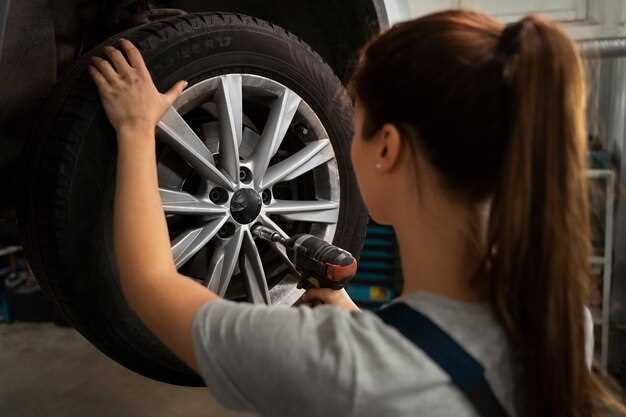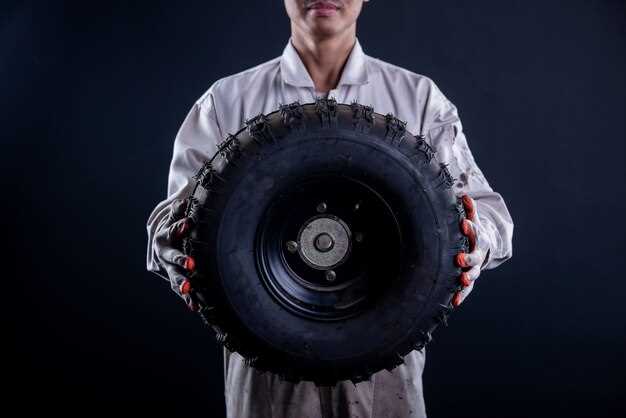
In the pursuit of improved driving experience, upgrading your wheels and tires stands out as one of the most impactful modifications you can make. The right set of wheels and tires not only enhances the aesthetic appeal of your vehicle but also significantly influences handling, traction, and overall performance. Whether you’re a casual driver or a performance enthusiast, understanding the benefits of this upgrade is crucial for making informed choices.
Wheels play a pivotal role in a vehicle’s weight distribution, responsiveness, and braking capabilities. By opting for lightweight alloys, you can reduce unsprung mass, which allows for quicker acceleration and more agile handling on the road. Additionally, the right wheel design can improve air flow to brakes, thus enhancing their performance. Choosing the right size and width is essential, as it affects not just performance but also compatibility with your vehicle’s suspension system.
Tires, on the other hand, are the primary point of contact between your vehicle and the road. Upgrading to premium tires can greatly enhance grip, stability, and comfort. Quality tires are engineered for various weather conditions and driving styles, providing better traction on wet, dry, or snowy surfaces. Investing in high-performance tires tailored to your driving needs can lead to improved handling characteristics and a more responsive ride.
Ultimately, upgrading your wheels and tires is more than just a cosmetic enhancement; it is a strategic move towards optimizing your vehicle’s performance and safety. By making well-informed choices, you can transform your driving experience and elevate performance on every journey.
Choosing the Right Tires for Your Driving Style

Selecting the appropriate tires for your driving style is essential for optimizing vehicle performance, safety, and comfort. Different driving conditions and preferences require specific tire characteristics, so it’s important to assess your needs accurately.
If you frequently drive in urban environments, consider all-season tires that offer a balanced performance on both wet and dry roads. These tires provide adequate traction, comfort, and longevity, making them suitable for everyday driving. Their versatility is a significant advantage for city dwellers who encounter various weather conditions.
For performance enthusiasts or those who often drive on winding roads, high-performance tires are an excellent choice. These tires are engineered for responsive handling and enhanced grip at higher speeds. They may sacrifice comfort for improved performance, which is ideal for spirited driving experiences.
If off-road adventures are your preference, specialized off-road tires are necessary. These tires feature aggressive tread patterns for better traction on loose surfaces like mud, gravel, and sand. Additionally, they often have reinforced sidewalls to withstand the rugged terrain, ensuring durability and reliability during your excursions.
In regions with heavy snowfall, winter tires are indispensable. These tires are crafted with softer rubber compounds that remain flexible in cold temperatures, providing superior grip on icy surfaces. The deep treads and unique patterns enhance traction, minimizing the risk of slipping and improving overall safety during harsh winter conditions.
Lastly, if fuel efficiency is a key concern, consider eco-friendly tires designed to reduce rolling resistance. These tires can enhance fuel economy while maintaining adequate performance, providing a balance for drivers looking to save on gas costs without compromising safety.
Assessing your driving style, typical road conditions, and specific needs will guide you in selecting the right tires. Investing time in this decision can significantly enhance your vehicle’s performance, safety, and efficiency.
Benefits of Lightweight Wheels for Improved Handling
Upgrading to lightweight wheels can significantly enhance your vehicle’s handling characteristics. These wheels are typically constructed from materials such as aluminum or magnesium, which provide substantial weight savings compared to traditional steel wheels. This reduction in unsprung weight allows for better responsiveness and agility during driving.
One of the primary advantages of lightweight wheels is the improvement in acceleration and deceleration performance. A lighter wheel means that your vehicle requires less energy to initiate movement and stop, leading to quicker response times. This is especially beneficial in performance driving scenarios, where every fraction of a second counts.
Lightweight wheels also contribute to better cornering stability. With a lower mass to manage, the suspension can react more quickly to changes in road conditions, allowing the tires to maintain better contact with the surface. This results in enhanced grip and control when navigating turns, making it easier to maintain speed without compromising safety.
Additionally, lighter wheels can improve overall ride quality. Reduced unsprung mass allows the suspension system to work more effectively, absorbing bumps and irregularities in the road. This leads to a smoother driving experience, reducing the fatigue associated with long drives and enhancing overall comfort.
Finally, lightweight wheels can positively influence fuel efficiency. By decreasing the overall weight of the vehicle, the engine does not have to work as hard to propel the car, leading to improved miles per gallon. This can result in cost savings over time, making lightweight wheels a practical investment for both performance enthusiasts and everyday drivers.
When to Replace Your Tires for Optimal Performance

Regularly assessing the condition of your tires is crucial for maintaining optimal performance and safety on the road. One of the most important indicators that it may be time to replace your tires is tread wear. A tire should be replaced when the tread depth reaches 2/32 of an inch. Using the penny test can help: insert a penny into the tread; if you can see all of Lincoln’s head, it’s time for new tires.
Another critical factor is the age of the tires. Even if the tread appears adequate, tires should generally be replaced every six years, and no tire should be used beyond ten years of manufacturing, regardless of tread condition. Aging tires can lead to reduced traction and increased risk of blowouts.
Visual inspections can reveal other signs indicating a need for replacement. Look for cracks in the sidewalls, bulges, or any punctures that cannot be repaired. Uneven wear patterns can also signal alignment or suspension issues that need to be addressed and may require new tires if the problems persist.
Additionally, if you frequently experience a loss of air pressure or noticeable vibrations while driving, these may indicate that your tires are compromised. Regular checks and maintenance can help prolong tire life, but timely replacement is essential to ensure not only performance but also safety.

